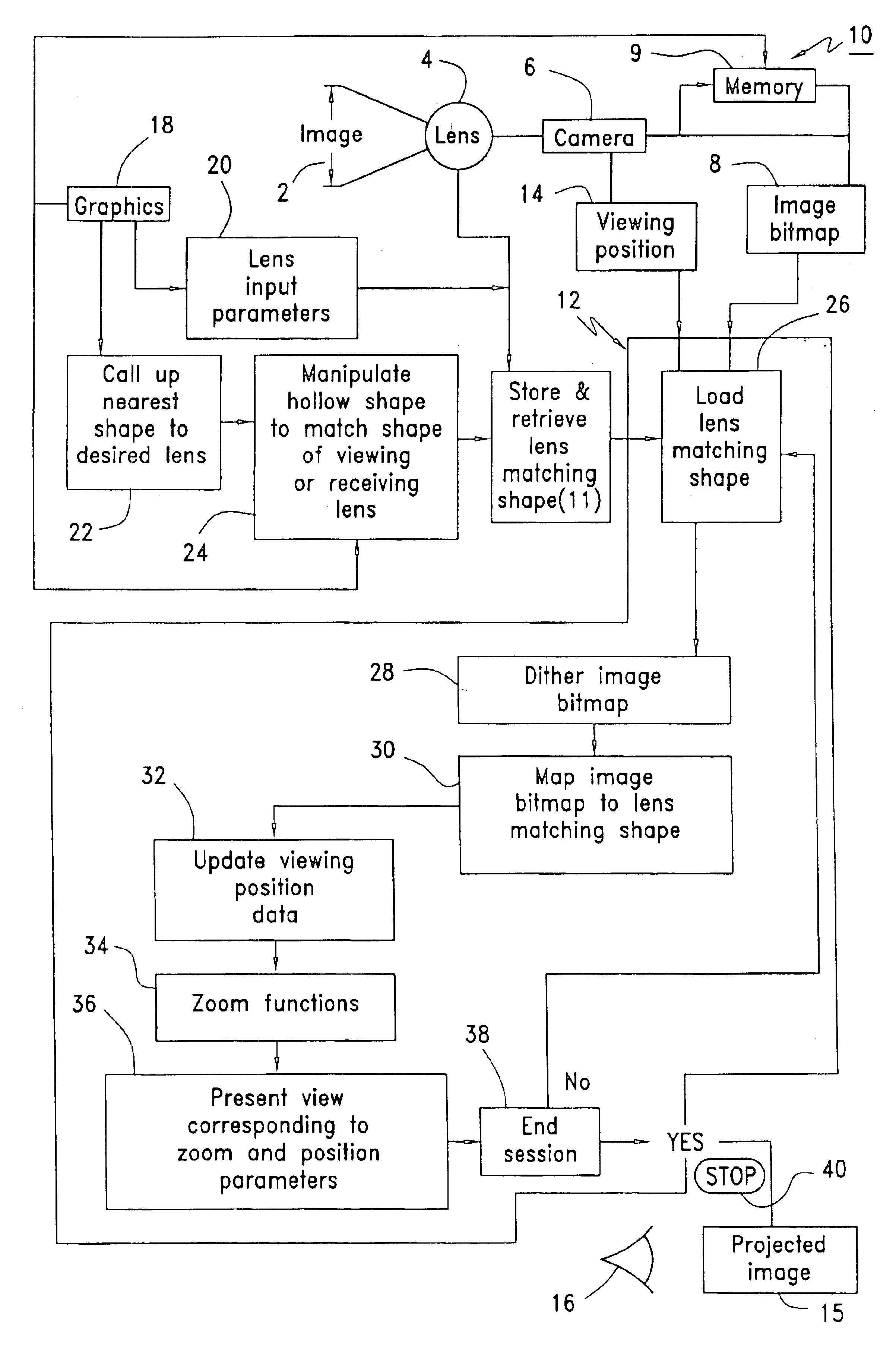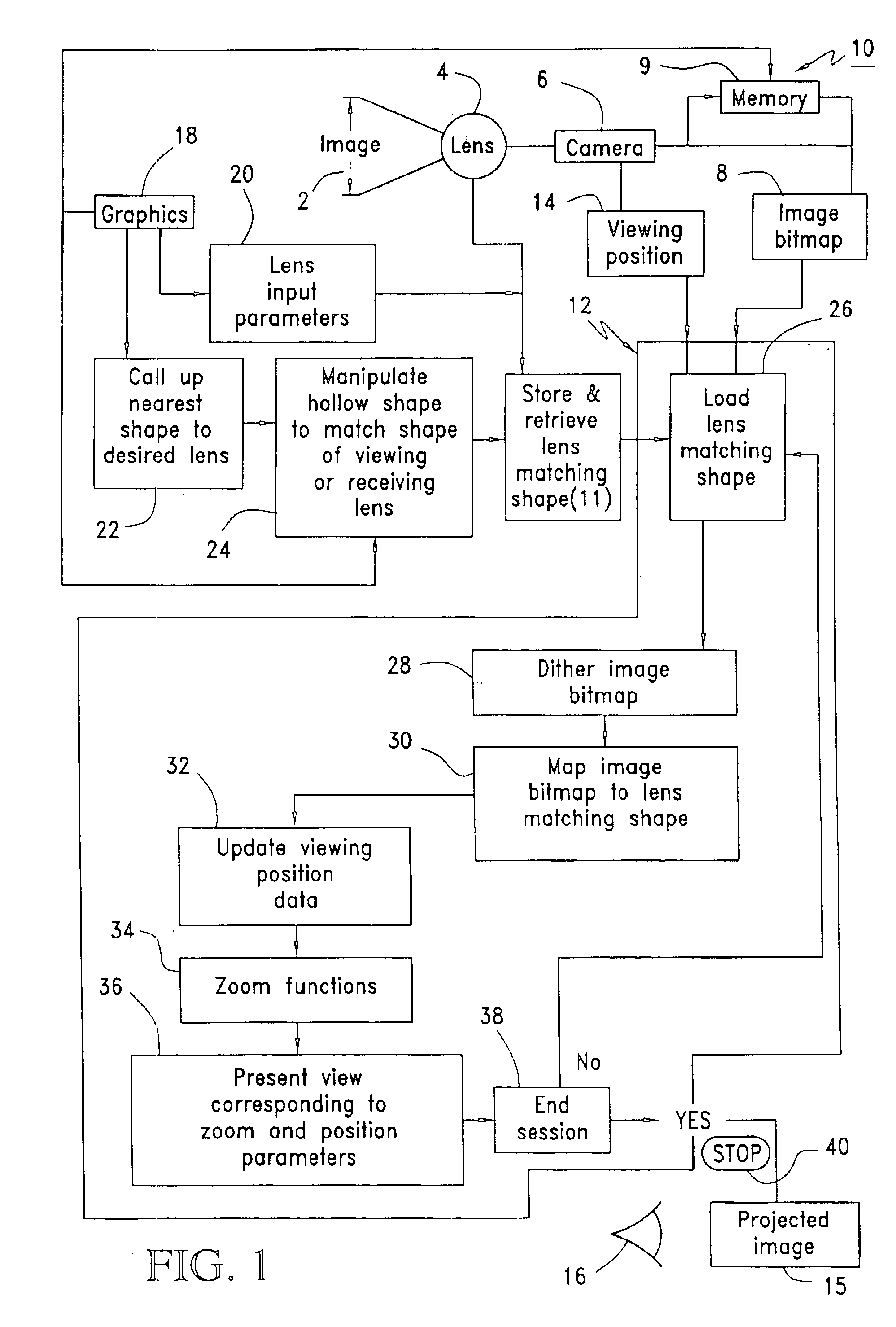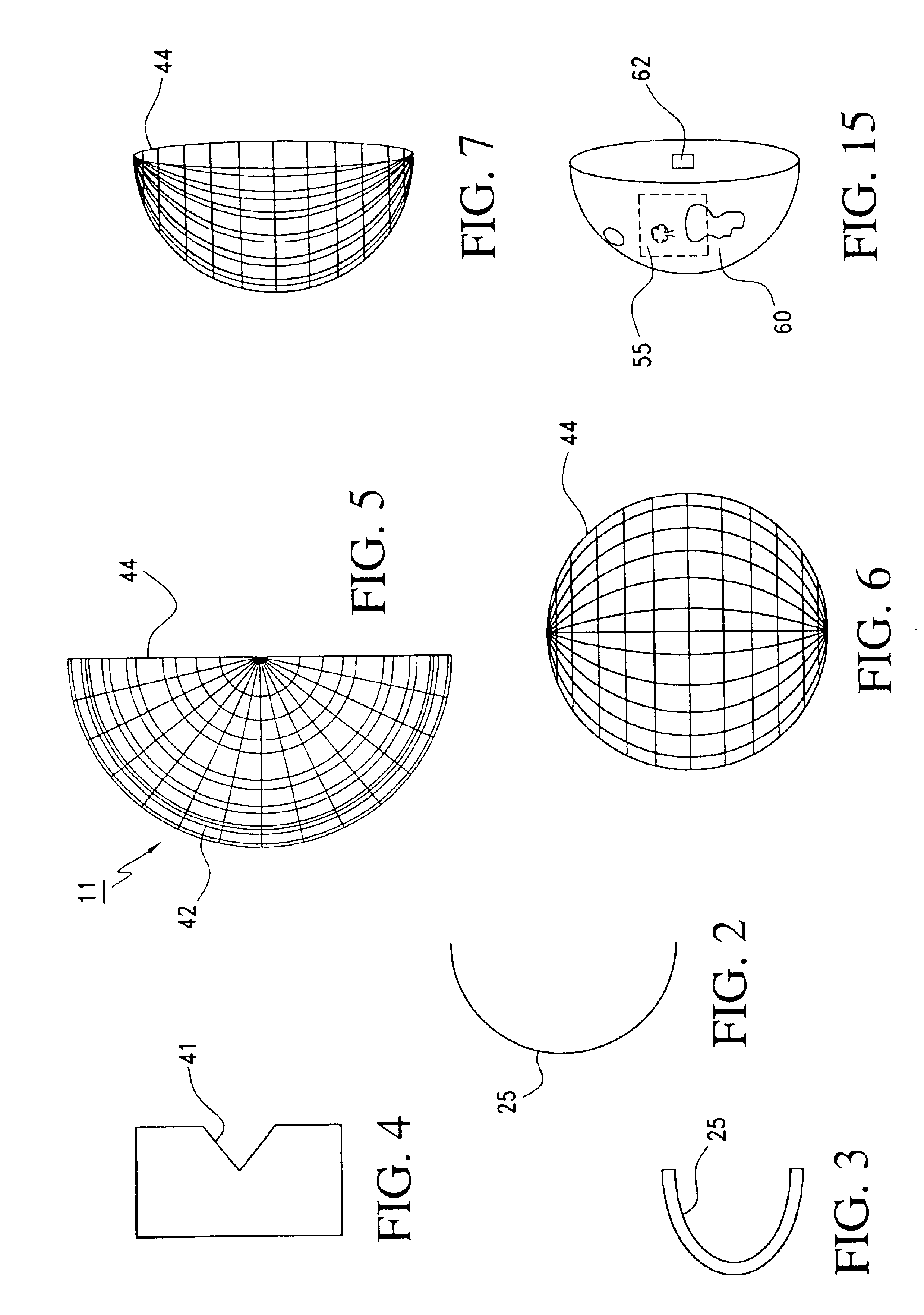Image display
a technology of image and frame rate, applied in the field of apparatus and methods, can solve problems such as geometric distortion, and achieve the effect of high frame rate and correcting image distortion
- Summary
- Abstract
- Description
- Claims
- Application Information
AI Technical Summary
Benefits of technology
Problems solved by technology
Method used
Image
Examples
Embodiment Construction
In the present invention an image 2, to be mapped and viewed live or recorded for later viewing, is recorded through a recording lens 4 by a camera 6. The original recording “lens” may consist of a single lens, composite lens, a multiple lens system, or a focusing system. As shown in FIG. 1, there may be one or more lens 4a, 4b. For the sake of simplicity, the recording lens system will be referred to as the recording lens 4. The image 2 may be “live” and altered as it is filmed, it may come from storage, it may be cable broadcast, or it may come from a DVD (digital versatile disk).
Virtual reality technology often uses recording lenses that are a wide-angle lenses. Wide-angle partial panoramic photos, 120 to 180 degree lenses and 360-degree lenses can capture images in a cost-effective manner using either a standard camera or a digital camera. Examples of wide-angle and ultra wide-angle recording lenses include “fisheye” lenses and torus shaped (doughnut) lenses. The problem is that...
PUM
 Login to View More
Login to View More Abstract
Description
Claims
Application Information
 Login to View More
Login to View More - R&D
- Intellectual Property
- Life Sciences
- Materials
- Tech Scout
- Unparalleled Data Quality
- Higher Quality Content
- 60% Fewer Hallucinations
Browse by: Latest US Patents, China's latest patents, Technical Efficacy Thesaurus, Application Domain, Technology Topic, Popular Technical Reports.
© 2025 PatSnap. All rights reserved.Legal|Privacy policy|Modern Slavery Act Transparency Statement|Sitemap|About US| Contact US: help@patsnap.com



